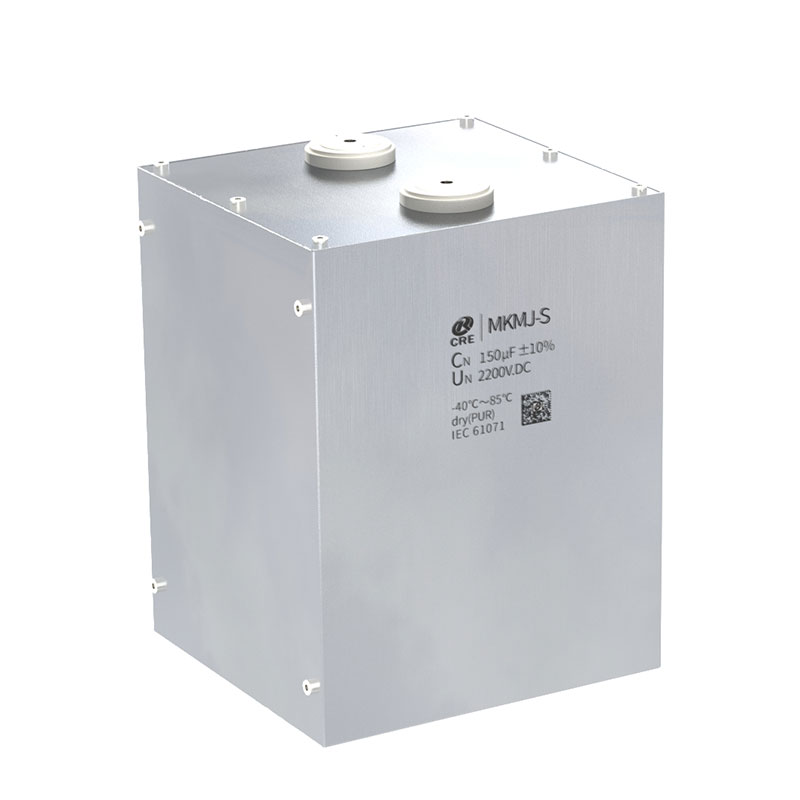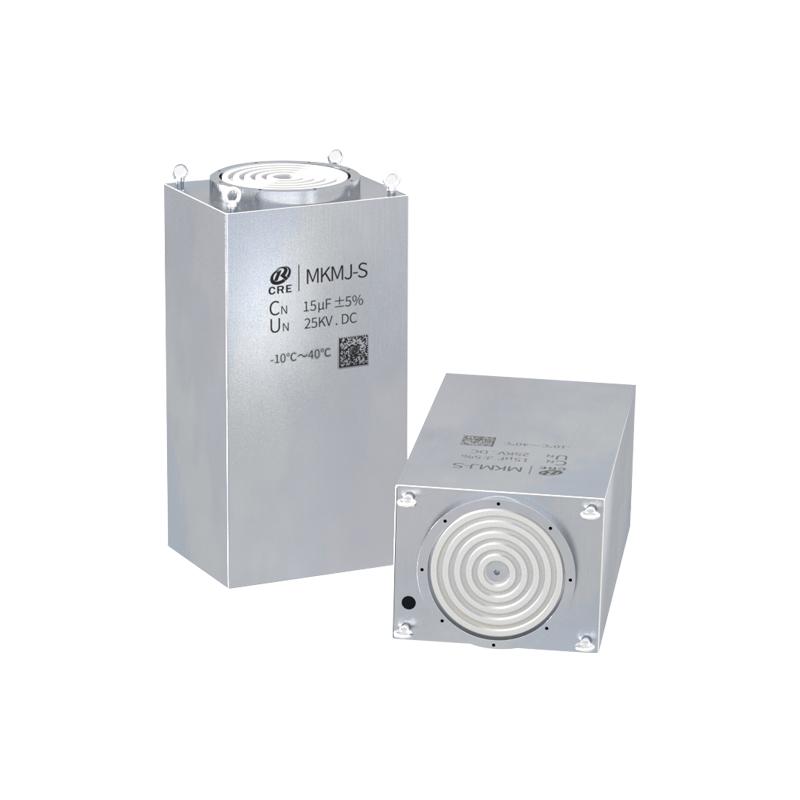- All
- Product Name
- Product Keyword
- Product Model
- Product Summary
- Product Description
- Multi Field Search
Views: 0 Author: Site Editor Publish Time: 2025-06-20 Origin: Site











In the realm of electrical engineering, filters play a pivotal role in manipulating signal frequencies to achieve desired outcomes. Two fundamental components used in filter design are capacitors and inductors. Understanding the differences between capacitor and inductor filters is crucial for engineers seeking to optimize circuit performance. This article delves into the core distinctions between these two types of filters, exploring their operational principles, applications, and the impact they have on electrical circuits. Moreover, we will highlight how Pulse Capacitors are integral in certain filtering applications.
 Fundamental Principles of Capacitor Filters
Fundamental Principles of Capacitor FiltersCapacitor filters, commonly known as capacitive filters, utilize the property of capacitance to smooth out voltage fluctuations in a circuit. They are predominantly used in power supply circuits to reduce the ripple voltage of rectified output. The capacitor charges during the peak voltage periods and discharges during the troughs, effectively leveling out the variations in voltage. The efficiency of a capacitor filter is influenced by factors such as capacitance value, load resistance, and the frequency of the input signal.
The selection of the appropriate capacitor is vital. High-capacitance values provide better filtering but may introduce issues like inrush current. Materials and construction also affect performance; for instance, electrolytic capacitors are common in power supplies due to their high capacitance-to-volume ratio.
Capacitor filters are essential in applications where voltage smoothing is required. They are widely used in DC power supplies, audio amplifiers, and any circuit where stable voltage is crucial. In RF applications, capacitor filters help eliminate high-frequency noise, ensuring signal integrity. The role of capacitors in these filters underscores their importance in the overall functionality of electronic devices.
Inductor filters, or choke filters, operate based on the property of inductance. Inductors resist changes in current, making them suitable for smoothing out current fluctuations in a circuit. When placed in series with the load, an inductor filter blocks high-frequency signals while allowing low-frequency signals or DC components to pass. This characteristic is particularly useful in applications where the reduction of AC ripple in the output current is needed.
The effectiveness of an inductor filter depends on the inductance value and the frequency of the unwanted signal components. A higher inductance provides better filtering of higher frequencies but may result in a larger and heavier component, which can be a disadvantage in compact electronic devices.
 Applications of Inductor Filters
Applications of Inductor FiltersInductor filters are commonly used in power supply circuits, particularly in conjunction with capacitors to form LC filters for enhanced filtering performance. They are also utilized in audio equipment to filter out undesirable frequencies and in power electronics where smoothing of the current waveform is necessary. The ability of inductors to handle high current levels makes them suitable for heavy-duty applications.
While both capacitors and inductors are used for filtering purposes, they exhibit distinct characteristics due to their fundamental operating principles. Capacitor filters are more effective at filtering out low-frequency signals when the load resistance is high, whereas inductor filters perform better with low load resistance. This is because capacitors offer high reactance at low frequencies, and inductors offer high reactance at high frequencies.
Another key difference lies in their impedance behavior. Capacitors have an impedance that decreases with increasing frequency, making them suitable for shunting high-frequency noise to ground. Inductors, on the other hand, have an impedance that increases with frequency, which is why they are placed in series to block high-frequency components.
The choice between using a capacitor or inductor filter significantly affects circuit design. Capacitor filters are generally smaller and less expensive, making them ideal for compact and cost-sensitive applications. Inductor filters, albeit bulkier and costlier, provide superior filtering in certain scenarios, especially when dealing with high currents. Designers must balance these factors, considering space, cost, performance requirements, and the nature of the load.
Pulse Capacitors are specialized capacitors designed to handle high peak currents and voltages in pulse applications. They are constructed to withstand rapid charge and discharge cycles without significant degradation. In filtering applications, pulse capacitors are essential when dealing with transient signals or pulses that require quick response times.
In circuits where pulse shaping and timing are critical, such as in radar and pulse-forming networks, the use of pulse capacitors ensures reliable performance. Their low inductance and high capacitance values enable them to filter out unwanted frequency components effectively, making them indispensable in high-speed electrical systems.
The advantages of pulse capacitors include their ability to deliver high current pulses with minimal loss and their robustness in demanding environments. They offer superior thermal stability and longevity compared to standard capacitors. Incorporating Pulse Capacitors in filter designs enhances the circuit's ability to handle rapid voltage changes, ensuring signal fidelity and system reliability.
In practice, filters often incorporate both capacitors and inductors to leverage the advantages of each component. LC filters, which combine inductors and capacitors, are used to achieve sharper cut-off frequencies and better attenuation of unwanted signals. These filters are essential in applications like radio communications, where precise frequency selection is critical.
The design of LC filters requires careful calculation of inductance and capacitance values to meet the desired filter specifications. Factors such as the quality factor (Q) of the components, parasitic elements, and the operating frequency range must be considered to optimize performance.
When designing LC filters, engineers must consider the source and load impedances, as they affect the filter's response. Component tolerances and temperature coefficients are also important, as they influence the stability and accuracy of the filter. The use of high-quality components like Pulse Capacitors can enhance the filter's performance by minimizing losses and maintaining consistent characteristics under varying conditions.
Understanding the practical applications of capacitor and inductor filters solidifies their theoretical concepts. In power supply units for computers, capacitor filters are crucial for providing a stable DC voltage to sensitive components. Inductor filters are prevalent in industrial power systems, where they mitigate harmonic distortion caused by heavy machinery.
For instance, in renewable energy systems like solar inverters, filters play a key role in converting DC electricity from solar panels into clean AC power suitable for the grid. The integration of Pulse Capacitors in these filters enhances the inverter's efficiency and reliability.
In high-fidelity audio systems, the quality of the filtering components directly affects sound reproduction. Capacitor filters are used to smooth the power supply, reducing noise and hum in the audio output. Inductors are employed in crossover networks within speakers to direct specific frequency ranges to the appropriate drivers. Selecting the right type of capacitor and inductor ensures that the audio signal is free from distortion, providing a clear and accurate listening experience.
As electronic devices continue to evolve, the demand for more efficient and compact filtering solutions grows. Advances in materials science are leading to the development of capacitors and inductors with enhanced performance characteristics. For example, the use of nanomaterials in capacitor construction can increase capacitance while reducing size.
Similarly, innovations in inductor technology are yielding components with higher inductance values in smaller packages. The integration of passive components into semiconductor substrates is an emerging trend, enabling the miniaturization of filters and the advancement of microelectronic circuits.
These advancements will have significant implications for filter design. Engineers will be able to create more efficient filters that occupy less space and consume less power. The role of specialized components like Pulse Capacitors will become even more critical in applications requiring high performance and reliability.
Capacitor and inductor filters are fundamental components in electrical engineering, each offering unique advantages based on their properties. Understanding the differences between them is essential for designing efficient and effective circuits. The use of Pulse Capacitors in specific applications highlights the importance of selecting the right components to meet performance requirements.
As technology progresses, the evolution of filter components will continue to shape the capabilities of electronic systems. Engineers must stay abreast of these developments to leverage new materials and designs in their work. The synergy between capacitors and inductors in filter design exemplifies the intricate balance of principles that drive innovation in the field of electronics.